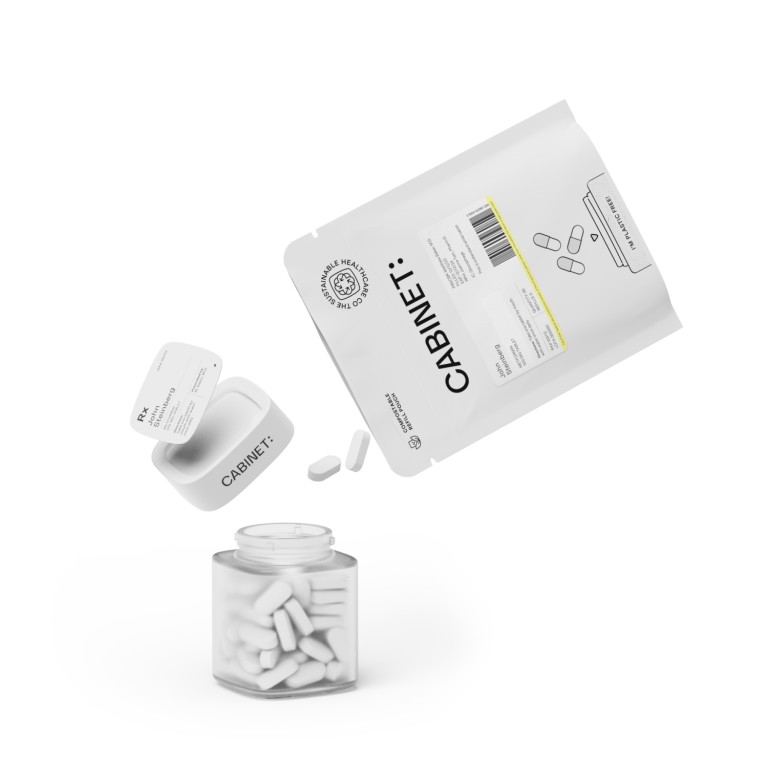Blood clots can be a serious and potentially life-threatening condition. Thankfully, there are medications available to help prevent them, such as warfarin. In this article, we will provide you with valuable insights and tips on how to navigate blood clot prevention with warfarin. From understanding how warfarin works to managing its potential side effects, we will cover it all. So, let's dive in and empower ourselves with warfarin wisdom!
Understanding Warfarin: A Brief Overview
The Role of Warfarin in Blood Clot Prevention
Warfarin is a medication commonly used to prevent and treat blood clots. It belongs to a group of medications called anticoagulants, which work by slowing down the body's clotting mechanism. By doing so, warfarin helps reduce the risk of blood clots forming in the veins or arteries.
Warfarin is often prescribed to patients who have a history of conditions such as deep vein thrombosis (DVT), pulmonary embolism, or atrial fibrillation, as these conditions can increase the risk of dangerous blood clots. By taking warfarin as directed by a healthcare provider, patients can effectively manage their clotting risk and prevent potentially life-threatening complications.
How Warfarin Works: The Science Behind the Medicine
Warfarin works by interfering with the production of certain clotting factors in the liver. These clotting factors are essential for the formation of blood clots. By inhibiting their production, warfarin helps prevent the formation of clots that could potentially block blood flow and cause serious health issues.
It's important for patients taking warfarin to undergo regular blood tests to monitor their International Normalized Ratio (INR) levels. INR is a measure of how long it takes for a patient's blood to clot and is used to ensure that the dosage of warfarin is appropriate for each individual. Maintaining the correct INR range is crucial for the effectiveness and safety of warfarin therapy.
The Importance of Blood Clot Prevention
Risks Associated with Blood Clots
Before delving further into warfarin's role in blood clot prevention, let's take a moment to understand the risks associated with blood clots. Blood clots can lead to complications such as deep vein thrombosis (DVT), pulmonary embolism, stroke, and heart attack. These conditions can have severe consequences and require immediate medical attention.
Deep vein thrombosis (DVT) occurs when a blood clot forms in a deep vein, usually in the legs. If left untreated, DVT can lead to a pulmonary embolism, a life-threatening condition where the blood clot travels to the lungs and blocks blood flow. This interruption in blood flow can cause serious damage to the lungs and other organs, emphasizing the critical importance of blood clot prevention.
Who is at Risk for Blood Clots?
Understanding who is at risk for blood clots is crucial for effective prevention. Certain factors, such as advanced age, obesity, smoking, prolonged immobility, and a personal or family history of blood clots, can increase your risk. Additionally, certain medical conditions like cancer, heart disease, and diabetes may also heighten the risk of blood clots.
Pregnant women are also at an increased risk of developing blood clots due to changes in blood flow and clotting factors during pregnancy. The use of hormonal birth control methods like oral contraceptives can further elevate the risk of blood clots. It is essential for individuals in these high-risk categories to be vigilant about blood clot prevention strategies to safeguard their health and well-being.
Administering Warfarin: Dosage and Timing
Determining the Right Dosage
Administering warfarin requires careful monitoring to ensure the dosage is tailored to your specific needs. Your doctor will conduct regular blood tests to measure your International Normalized Ratio (INR), which helps determine the appropriate warfarin dosage. It is essential to follow your doctor's guidance and never adjust the dosage without their approval.
Warfarin, a commonly prescribed anticoagulant, works by inhibiting the body's ability to form blood clots. The dosage of warfarin is highly individualized and is influenced by various factors such as age, weight, diet, and other medications you may be taking. It is crucial to communicate openly with your healthcare provider about any changes in your health status or lifestyle that may impact your warfarin dosage.
The Importance of Consistent Timing
Consistent timing is crucial when taking warfarin. It's typically prescribed as a once-daily medication, and sticking to a regular schedule is important for its effectiveness. You should take warfarin at the same time each day to maintain a consistent level of the medication in your bloodstream. Remember to set reminders or use medication organizers to help you stay on track.
Moreover, certain foods and beverages can interact with warfarin, affecting its efficacy and potentially leading to complications. Foods rich in vitamin K, such as leafy green vegetables, can counteract the effects of warfarin. It's essential to maintain a consistent intake of vitamin K-rich foods to avoid sudden fluctuations in your INR levels. Your doctor or a registered dietitian can provide guidance on how to balance your diet while taking warfarin.
Potential Side Effects of Warfarin
Warfarin, a commonly prescribed anticoagulant medication, is known for its effectiveness in preventing blood clots. However, like any medication, warfarin can also cause side effects that vary in severity. It is crucial for patients to be aware of these potential side effects and to communicate any concerns with their healthcare providers.
Common Side Effects
Like many anticoagulants, warfarin can lead to common side effects such as bruising, bleeding, mild stomach upset, and even hair loss. These side effects are typically mild and transient, often resolving as the body adjusts to the medication. It is important to monitor these symptoms and report any persistent or severe side effects to your healthcare provider for further evaluation.
Serious Side Effects and When to Seek Help
While uncommon, warfarin has the potential to cause serious side effects that require immediate medical attention. These may include symptoms such as excessive bleeding, blood in the urine or stool, severe headaches, or unusual swelling. If you experience any of these severe side effects, it is crucial to seek prompt medical care to prevent further complications. Finding the right balance between the benefits of warfarin in preventing blood clots and the potential risks associated with its use is essential for managing your health effectively.
Living with Warfarin: Lifestyle Considerations
Warfarin, a commonly prescribed anticoagulant, requires careful consideration of lifestyle factors to ensure its effectiveness in preventing blood clots. In addition to medication adherence, dietary choices play a crucial role in maintaining a balance while on warfarin therapy. Vitamin K, a key nutrient involved in blood clotting, interacts with warfarin, necessitating a consistent intake of vitamin K-rich foods. Green leafy vegetables like spinach and kale are excellent sources of vitamin K, but moderation and consistency are key to managing your warfarin therapy effectively. Seeking guidance from healthcare professionals, such as registered dietitians, can provide personalized strategies to navigate this dietary balancing act.
Dietary Guidelines for Warfarin Users
When taking warfarin, certain dietary considerations are essential. Vitamin K plays a crucial role in blood clotting, and warfarin works by inhibiting its activity. Therefore, maintaining a steady intake of vitamin K-rich foods is important. Green leafy vegetables, such as spinach and kale, are excellent sources of vitamin K. However, it's important to maintain a consistent intake to ensure the effectiveness of warfarin. Consult with your healthcare provider or a registered dietitian for personalized guidance.
Furthermore, beyond diet, understanding the impact of other medications, herbal supplements, and alcohol consumption on warfarin's effectiveness is crucial. These factors can interact with warfarin, potentially altering its efficacy and increasing the risk of complications. Open communication with healthcare providers about all substances consumed concurrently with warfarin is essential for safe and effective anticoagulation therapy.
Exercise and Activity Recommendations
Regular exercise and staying physically active are generally beneficial for overall health, including blood clot prevention. However, it's essential to strike a balance and avoid activities with a high risk of injury or bleeding. Consult your healthcare provider for guidance on suitable exercise and activity levels based on your individual situation.
By understanding warfarin's role in blood clot prevention, managing its dosage and timing, being aware of potential side effects, and making lifestyle adjustments, you can navigate blood clot prevention with confidence. Remember, always consult your healthcare provider for personalized advice and guidance throughout your warfarin journey. Stay proactive, informed, and empowered in your pursuit of a healthy and clot-free life!
If you're already on the path to managing your health with warfarin, take the next step with Cabinet® Health and see if your prescription refill qualifies for a smarter, more sustainable pharmacy experience. Look Up Your Prescription now to potentially transfer to Cabinet® Pharmacy. Enjoy the perks of a free personalized glass bottle, a chic medicine travel tin, and a complimentary bottle of premium Acetaminophen. Experience the convenience of rapid transfer from your current pharmacy, with refills handled for you, all delivered directly to your door in eco-friendly, compostable pouches. Our dedicated pharmacists are committed to making your switch seamless and stress-free, ensuring your warfarin journey is supported every step of the way. Signing up is quick and easy, and you'll love the clutter-free, personalized touch we add to your medication management. Join Cabinet® Health today and elevate your healthcare routine.









